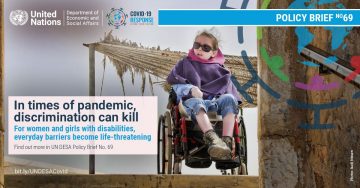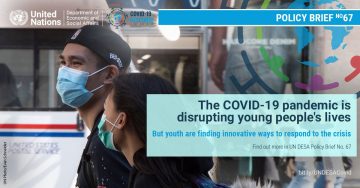Publications
Displaying 1 - 2 of 2
Policy Briefs |
Persons with disabilities—both visible and invisible—face obstacles and discrimination in accessing health care and other essential services, social protection and income security, mental health services, and communication technologies. In addition, women and girls with disabilities are subject to intersecting forms of discrimination related to sexual and reproductive health, gender-based violence, legal protection, unpaid care and domestic work. Women and girls with disabilities who are migrants, refugees, or from ethnic minorities endure even more hardships and unequal treatment. Gender, disability and structural inequalities, which characterized societies before the crisis, are being…
Policy Briefs |
Socioeconomic impacts
Prior to the onset of COVID-19, youth (aged 15 to 24) were already three times more likely to be unemployed compared to adults, while 126 million young workers were in extreme and moderate poverty worldwide (International Labour Organization, 2020). Young workers are also more likely to be in precarious employment than other age groups. Whereas some 77 per cent of youth are estimated to be informally employed globally, this percentage is even higher for young women in low and lower-middle-income countries (International Labour Organization, 2018).
The increase in unemployment as a result of COVID-19 is expected to exceed the rise in rates of unemployment in the…
 Welcome to the United Nations
Welcome to the United Nations

